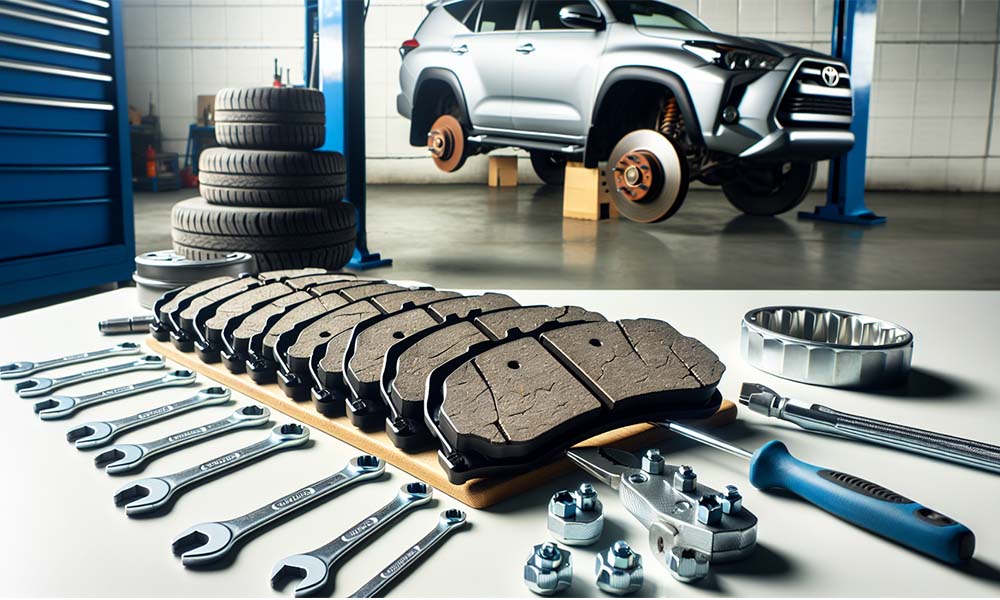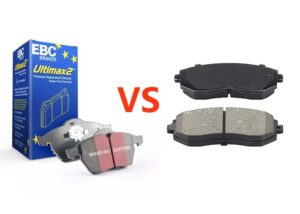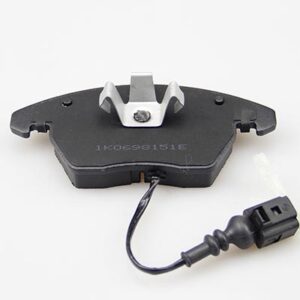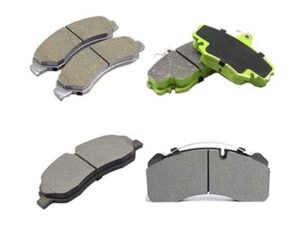It is important to know when to replace brake pads and how long they typically last for your Toyota. This will help keep your vehicle safe and running smoothly. Brake pads need to be replaced periodically to ensure optimal performance. Knowing the signs of worn brake pads can help prevent accidents and costly repairs. Regular maintenance and inspections can help you stay on top of your brake pad replacement schedule.
Understanding Brake Pads and Their Role in Your Toyota
Understanding the components and their roles in your Toyota’s braking system is key to recognizing the importance of brake pads and when they may need replacement:
- Brake Pads:
- The initial thickness of 1/2″ wears down to 1/4″ necessitating replacement.
- Attached to the calipers, they prevent direct metal-on-metal contact, reducing wear on the rotors
- Generate the necessary friction to slow down and stop your Toyota, making it a critical component of the braking system.
- Brake System Components:
- Rotors: Metal wheels inside the tire that are integral to the brake system. Vital for dissipating heat generated from pad friction.
- Calipers: Devices that squeeze the rotors to create friction and slow the car.
- Choosing Brake Pads:
- KETULLA brake pads are recommended for their higher quality and compatibility with Toyota’s braking system. we can show the drawings for each pad according to the international dimensions.
- KETULLA Toyota brake pads are designed with precision engineering for optimal performance and safety, with No noise and vibration for a smoother driving experience.
It’s essential to use Toyota-tested and approved brake pads to ensure proper fit, form, and function, installed by factory-trained technicians for optimal safety and stability.
Factors Influencing Brake Pad Wear and Tear
Understanding the myriad factors that influence brake pad wear and tear is crucial for Toyota owners. Here are key elements to consider:
- Driving Habits and Environment:
- City driving involves more frequent braking than highway driving, accelerating wear.
- Aggressive driving and high-speed braking also contribute to quicker wear.
- Environments with more stops and starts, like urban areas, can reduce the lifespan of brake pads.
- Brake Pad Material and Vehicle Use:
- The composition of brake pads, whether organic, semi-metallic, or ceramic, affects durability and performance.
- Heavier vehicles or those frequently carrying more weight can experience faster brake pad wear.
- Maintenance and Mechanical Factors:
- Regular inspections can identify when replacements are necessary, ensuring brake pads fit well and last longer.
- Incorrect wheel lug torque and unbalanced tires can damage brake pads and other components.
- Flushing brake fluid every 25,000 miles lubricates the braking system, aiding in pad longevity.
These insights highlight the importance of mindful driving and regular vehicle maintenance in extending the life of Toyota brake pads.
Signs That Indicate Your Brake Pads Need Replacement
Identifying when to replace brake pads on your Toyota is crucial for maintaining vehicle safety and performance. Here are key signs to watch for:
- Noises When Braking:
- Squeaking or grinding noises indicate that the brake pads may be worn down to the rotors.
- A high-pitched screeching sound when braking signals that the brake pads have thinned dangerously and need replacement.
- Grinding sounds suggest the material covering has completely worn out, necessitating immediate replacement.
- Brake Pedal and Vehicle Behavior:
- A spongy or soft brake pedal can signal air or moisture in the brake lines, worn brake pads, or a brake fluid leak.
- Vibrations during braking could indicate warped rotors and uneven brake pad wear.
- If the car pulls to one side when braking, it could be due to a stuck caliper, a collapsed brake hose, or unevenly worn brake pads.
- Visual and Indicator Alerts:
- Thinning brake pads, specifically if less than 1/4-inch thick, should be promptly replaced.
- The illumination of dashboard warning lights, such as the Antilock Braking System (ABS) light or Brake System Warning Light, signals a potential brake issue.
- Glazed pads, forming a smooth, glass-like exterior, cause brake failure due to lack of friction and need replacement.
Recommended Interval for Changing Brake Pads on Toyota Vehicles
To maintain the optimal performance and safety of your Toyota, adhering to a recommended brake maintenance timeline is crucial. Here’s a concise guide:
- Brake Pads Replacement:
- Interval: Between 30,000 to 50,000 km.
- Inspection Steps:
- Lift your car.
- Remove the wheels.
- Visually inspect the brake pads.
- Check the brake pad thickness.
- Average Lifespan: Typically, 30,000 to 50,000 km, though this can reach up to 80,000 miles depending on driving habits and road situations.
- Cost Considerations: Replacement costs may range from $ 20 to $200 per axle, depending on different countries and regions with specials available to reduce expenses.
- Rotors Replacement:
- Interval: Between 50,000 and 70,000 miles.
- Compatibility Note: While new brake pads can be fitted on old rotors, replacing brake pads promptly prevents rotor damage.
- Additional Recommendations:
- Manual Check: For model-specific intervals, consult your Toyota’s manual.
- Service Inspections: Have brakes inspected with every service visit to monitor wear and address issues early.
Adhering to these guidelines ensures your Toyota’s braking system remains in top condition, enhancing safety and performance.
In Summary
Throughout this comprehensive guide, we’ve explored the crucial aspects of brake pad maintenance for Toyota vehicles, emphasizing the importance of recognizing signs of wear, understanding the components involved, and acknowledging the factors affecting their life span. By adhering to the recommended guidelines for replacement intervals and opting for Toyota-tested brake pads, vehicle owners can ensure optimal performance and safety on the road. Regular inspections and maintenance, alongside mindful driving habits, play a significant role in extending the longevity of brake pads and maintaining the vehicle’s overall health.
In light of the insights shared, Toyota owners are encouraged to remain vigilant about their vehicle’s braking system, taking prompt action upon noticing any indicators of wear or deterioration. By doing so, not only do they safeguard their driving experience but also contribute to the safety of fellow road users. Remember, the health of your Toyota’s braking system is integral to its operation and safety – prioritizing brake pad maintenance is not just a matter of vehicle upkeep, but a fundamental aspect of responsible vehicle ownership.
FAQs
Q: How often should I replace the brake pads on my Toyota?
A: Toyota brake pads typically need to be replaced every 30,000 to 70,000 miles, but this range can vary based on your driving habits. Frequent braking in heavy traffic might necessitate more regular inspections and replacements.
Q: What does the brake pad wear indicator on a Toyota signify?
A: When you hear a squealing noise as your Toyota moves, it’s likely the brake pad wear indicator. This is a small metal component attached to the brake pad that makes contact with the rotor and produces a squeal to alert you when the brake pad material has worn down and needs replacement.
Q: What mileage marker indicates it’s time to replace brake pads?
A: It’s recommended to replace your car’s brake pads approximately every 25,000 to 65,000 km. Your rotors, on the other hand, should generally be replaced between 30,000 and 70,000 miles. Keep in mind that these figures can change based on the driving conditions, such as terrain and weather.
Q: What thickness indicates that brake pads should be replaced?
A: When inspecting your brake pads through the wheel spokes, if you notice they are less than 1/4 inch or 6.4 mm thick, coupled with an accumulation of brake dust, it’s time to consider getting a new set of brake pads.




